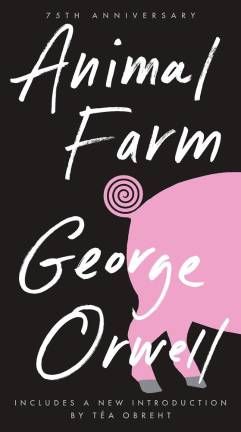Picking Perfect Parts
A conundrum over animals, rights and human transplantation

Who’s an animal? Who’s got rights? No, those are not trick questions. They are ones medical people are striving to clarify. The answer may save countless lives.
Right now, there are more than 100,000 Americans waiting for organ transplants. Given the close relationships among mammals of all species, xenotransplantation (from the Greek xeno meaning “foreign”) has seemed a natural path to follow. The first such documented experiments happened in 17th-century France and England where blood transfusions from animals were quickly rejected by human bodies.
Attaching full organs was a bit trickier, but in 1912 Parisian surgeon Alexis Carrel’s skill with a needle earned him the title “father of transplant surgery.” A decade or two later, his compatriot Serge Voronoff stuck slices of chimpanzee and baboon testicles into men and bits of ape ovaries into women to make his patients, well, sexier. Didn’t work.
Fast forward to 1974 when University of Mississippi surgeon James Hardy attempted the world’s first them-to-us cardiac transplant, putting a chimpanzee’s heart into the chest of a dying 68-year-old man who survived for a mere 90 minutes before tissue rejection ended his days.
Ten years later, California’s Baby Fae was born missing the left side of her heart. On her 12th day, surgeons at Loma Linda University transplanted a tiny baboon heart into her chest, administered immunosuppressant drugs, and watched anxiously for three weeks until once again the human body rejected the non-human organ.
Most Like Us
But given the lack of human donors there was no possibility that xenotransplantation would go the way of powdered unicorn horn. The trick was to find an animal most like us. Turns out it’s not the primates from which we descended. The creature who shares 98% of our genes is the one who ruled the revolution in George Orwell’s “Animal Farm” where all animals were equal but some such as pigs were more equal than others.
In 2021, doctors at NYU Langone connected a porcine kidney to a brain-dead human and watched it begin to produce urine within minutes. Last January, surgeons at the University of Maryland Medical Center transplanted a heart from a genetically modified pig into a patient who lived for another two months. Today, doctors here, there, and everywhere believe that successful pig to human transplants will soon be widely available.
The key, of course, is to modify the organ so that the two percent of its genes that don’t match ours do not trigger rejection. Right now one American biotech company is working to create pig embryos without three troublesome porcine genes, inactivate a growth hormone gene so the organs don’t keep growing inside their new host, and add genes that reduce the risk of inflammation and blood clotting.
The modified piglets will be born via Caesarean deliveries to avoid picking up bad bugs on a trip through the vaginal canal. Once alive, they will be kept raised in sterile environments with a little human contact as humanly possible.
Given the miracles of modern medicine, it is likely that eventually clean and functional animal organs will be harvested. Which raises another problem: Orwell chose his leaders well. Pigs may be missing that last critical two percent of our genes, but they are highly intelligent animals, capable of showing emotions, playing games and making fools of chimps on IQ tests.
Which is why animal rights people such as PETA want you to know that “[p]igs aren’t spare parts and should never be used as such just because humans are too self-centered to donate their bodies to patients desperate for organ transplants. Human organs are still the best hope, and presumed consent laws would make enough available to help people in need of a transplant.”
So, with the possibility of limitless organs at surgical fingertips, the question remains: Who’s an animal? And whose rights rule?